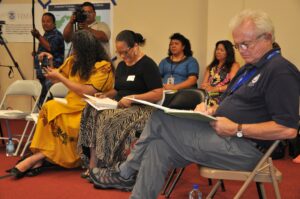The Importance of Using Plain Language in Public Relations
 Using plain language to communicate with journalists is not considered bland but effective. Whether your public relations campaign targets community or business publications, it is unlikely that reporters reviewing your press kit will be familiar with specific industry jargon. Providing them with information in plain language is the surest way to get your point across, significantly improving your chances for media coverage.
Using plain language to communicate with journalists is not considered bland but effective. Whether your public relations campaign targets community or business publications, it is unlikely that reporters reviewing your press kit will be familiar with specific industry jargon. Providing them with information in plain language is the surest way to get your point across, significantly improving your chances for media coverage.
“Unless it’s a particular trade magazine, press releases full of technical jargon and business acronyms are more likely to be passed over by editors,” says communications consultant Danna Yuhas. “Your purpose is not to impress them with big words but to clarify why your message is important, and has news value.”
What is Plain Language?
Plain language refers to communication that is clear, concise, and easily understood by the intended audience. It avoids jargon, complex sentence structures, and unnecessary technical terms in favor of simple, direct expression.
Yuhas says plain language keeps messages simple, but not simplistic. It neither talks down to the reader, nor “dumbs down” content. It structures information logically, in familiar terms. Doing so, she says, creates immediate benefits for both the editor and publicist.
“When editors or producers understand your message the first time they read your material, it reduces:
1.) Misquotes and factual misinterpretations.
2.) Telephone discussions to clarify content;
3.) And their revision time (e.g., they will use your material ‘as is’).”
The Benefits of Plain Language in Press Releases
- Improved Readability: By using plain language, press releases become more accessible to a wider audience, including journalists who may not be experts in your field.
- Increased Clarity: Clear writing reduces the risk of misinterpretation, ensuring that your key messages are accurately conveyed and understood.
- Enhanced Media Pick-up: Journalists are more likely to use press releases that are easy to understand and require minimal editing or clarification.
- Broader Reach: Plain language makes your content more shareable across various platforms, including social media, where brevity and clarity are prized.
- Time Efficiency: Both writers and readers save time when information is presented clearly and concisely.
Make the Job Easier for the Reporters
Yuhas continues: “Editors and producers appreciate receiving concise content about your company, and will welcome your story pitches in the future. Making their job easier will ultimately lead to additional media coverage, improving your company’s long-term image and top-of-mind presence.”
Writing press releases in plain language requires planning. Yuhas says the process begins by identifying the purpose of the message (e.g., what do you want to achieve?); the editorial audience; and the media’s audience.
Identifying the Right Editorial Audience
When determining the audience, you should study the following:
1.) What is their general knowledge and/or industry expertise?
2.) What background information do they require?
3.) Why are they reading the publication or tuning into the program? What are their needs and interests?
4.) How will they benefit from reading or hearing your story?
“The message must bring value to the audience to achieve desired results,” she says. “Readers should be able to quickly understand the key messages, and explain content to others.”
How to Simplify the Words you Use
To simplify your press releases and improve their chance of being published:
- When drafting press releases, break down complex concepts into manageable parts.
- Use short sentences that each communicate one idea.
- Remove words that do not improve understanding.
- Keep paragraphs to three or four sentences. This will keep comments in context, avoiding misquotes.
- Use definition, help, or side-box resources (‘sidebars’) to complement the main text. These will provide necessary background information, without interrupting your message.
- Avoid exclusive language, the kind of extraordinary wording or terminology that only a minority of readers will understand. “Popular phrases like ‘leading edge technology,’ or ‘proactive approaches’ are vague, and open to interpretation,” Yuhas says. “And because they are overused, they fail to differentiate your company.“
- Never make assumptions about the reader’s knowledge. “It can differ in social, geographic, and cultural contexts,” Yuhas says. “For example, is a 1-877 telephone number chargeable or toll free? It is necessary to clarify.“
- Press releases should not be an alphabet soup of acronyms. Explain each term fully the first time it is used, followed by its abbreviation. For example:
— generally accepted accounting principles (GAAP)
— initial public offering (IPO)Even ‘PR’ should be stated as ‘public relations‘ the first time it is used,” she says.
- Before sending press releases to the media, have others read your material for clarity. “Use their feedback to test the message’s effectiveness and efficiency, and ask them to explain what they have just read. This will determine if your message is clear, and if you have achieved your communication objectives.“
The Challenge of Balance
While plain language is crucial, it’s important to strike a balance between simplicity and maintaining the appropriate tone for your brand and industry. The goal is to be clear without oversimplifying complex ideas or losing the nuances of your message.
Communicating Clearly and Effectively
In an era of information overload, the ability to communicate clearly and effectively is more valuable than ever. By embracing plain language in press releases, organizations can ensure their messages cut through the noise, reaching and engaging their target audiences more effectively. Remember, the goal of a press release is not to impress with complex language, but to inform and inspire action. Plain language is the key to achieving this goal.
Resources
Plain language resources on the web:
Plain Language Association International (PLAIN): http://www.plainlanguagenetwork.org
Plain Language Action Network (for U.S. government employees): http://www.plainlanguage.gov
Resources on wording and capitalization are available from news-gathering organizations, such as the Associated Press (AP) and the Canadian Press (CP). “The Elements of Style’” by William Strunk Jr. and E.B. White summarizes the rules and principles of composition, and the use of words and expressions. A web version is viewable at: http://www.bartleby.com/141/.
This article, written by Adam Bello, originally appeared in PR Fuel (https://www.ereleases.com/prfuel), a free weekly newsletter from eReleases (https://www.ereleases.com), the online leader in affordable press release distribution. To subscribe to PR Fuel, visit: https://www.ereleases.com/prfuel/subscribe/.
